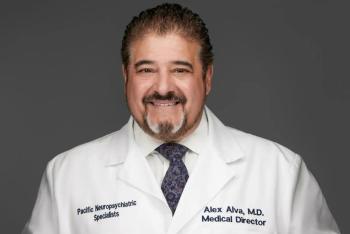
Developing the Capability for Virtual Consultation in the Age of COVID-19
Psychiatry is being thrown, ready or not, into the world of telemedicine. Here you will find lessons, tips, and answers to common questions from psychiatrists who have successfully taken the leap.
Physicians have been slowly adopting telepsychiatry as a way to provide remote consultation to emergency rooms and general hospital units. Virtual consultation is an emerging field; however, the
Up until now, the focus on telepsychiatry has been as a solution for systems that lack robust psychiatry resources. As such, telepsychiatry consultation was not considered necessary or relevant for many urban and academic centers. However, the COVID-19 pandemic has upended this bias. We are currently dealing with a situation in which health care providers are at significant risk, both for becoming infected with and transmitting the novel coronavirus, without distancing and isolation protocols.3 It is becoming clear that a key to decreasing the spread of the disease includes limiting all but essential contact with patients.4
With this in mind, various medical centers are at different stages in transitioning a portion of psychiatric consultation to telepsychiatry. These transitions range from a contemplation phase to programs that have already successfully made the transition. Although there has been some informal communication, most programs have been going this alone as they decide crucial questions of when in-person consultation is necessary.
To help facilitate this process, we use the experience of two programs-one in a private and not for profit institution and the other in a Veterans Affairs hospital-to help planning, implementing, and transitioning to telepsychiatry consultations in the emergency department and general hospital floors. As such, this piece attempts to answer some of the most common questions that other medical centers are putting to us.
1. What do we mean by telepsychiatry?
Telepsychiatry, also sometimes referred to as mobile health, refers to a
2. When is it appropriate to forego in-person visits and use a technological option instead?
Psychiatry is somewhat at an advantage when compared with other disciplines in this regard, in that psychiatric consultations will often forego or limit the physical examination of a patient. In many cases, we can obtain needed information to make a preliminary diagnosis and prepare recommendations without touching the patient.
In a patient who is alert, logical, and coherent, a conversation can often give us the critical information. In cases where the patient is not able to cooperate with a phone interview, observing them by video may provide us with sufficient information-for example, help us determine whether the patient's incoherence is due to delirium or psychosis.
In some cases, in-person interviews may be the only option. This can occur if the patient is too psychiatrically ill (paranoid or psychotic, for example) or disorganized to participate in a remote interview. If the patient is diagnosed with COVID-19, or is currently on precaution and considered at-risk, you must use appropriate personal protective equipment (PPE).
At the time of writing, many hospitals are experiencing shortages of this equipment. In our opinion, the risk of exposing oneself and others to the virus outweighs any benefit of performing an interview while unprotected. If appropriate PPE is not available, our advice is to do one's best by discussing the case with colleagues who have examined the patient and collecting as much information as possible. "Batched care" is also recommended; request that the primary team ask critical interview questions or obtain crucial mental status information during a routine entrance into the patient's room.
3. What if the patient is not in control-agitated or aggressive?
It is never good practice to enter an uncontrolled situation. If the patient poses a potential danger, the priority is safe containment and control of the patient. In these cases, a discussion with the primary clinician may be the most critical intervention to help the consulting team with managing the patient's behavior. A more comprehensive consultation may have to wait, but we can complete much of the consultation with a thorough review of the medical record.
4. What about HIPAA and protecting patient confidentiality?
To encourage telehealth use, the Office for Civil Rights (OCR) at the Department of Health and Human Services, the agency responsible for enforcing parts of HIPAA, issued a statement saying that it will not impose penalties for HIPAA noncompliance by health care providers who use
That said, we should all attempt to use technologies that respect patient confidentiality. Before the pandemic, popular telecommunication applications developed secure services that met the HIPAA compliance general standards. These platforms include: Skype for Business, Updox, Vsee, Zoom for healthcare, Doxy.me, and Google G Suite Hangouts. This list is not complete, and we do not endorse or recommend any particular product. (A comparison of products is likely irrelevant, as many hospital systems already use a specific technology.) Overall, each platform is relatively easy to use and more than adequate for this purpose.
5. Can I bill for this?
Billing is always a tricky issue and varies between regions and insurance companies. However, it is helpful to know that on March 6, Congress passed the Coronavirus Preparedness and Response Supplemental Appropriations Act, which allows physicians to bill Medicare fee for service for care delivered by telehealth for the duration of this pandemic.7 The devil is always in the details, but we have begun billing for these consultations using the CPT modifiers GT for Video Virtual consultations and GPH for a telephone consultation.
6. What if the other services see this as a shirking of our responsibility?
We should stress that the motivation for this is safety: the safety of the patients and the health care workers. We should remain committed to our duties to help patients with psychiatric illnesses, as well as assisting other teams in managing these patients. In our experience, switching to virtual consultations does not mean that we spend less time and effort on patients.
If anything, we often are spending more time talking with colleagues to understand the situation, gathering information from the chart and collateral sources, and arranging for the technology to be in place and operating correctly. Thus, this is not a way to avoid responsibility but rather the opportunity to give the care we have sworn to give in a responsible manner.
7. If I concentrate on limiting in person-consultations now, am I risking creating a "new normal"-in which my colleagues may no longer consider psychiatry services an essential part of the treatment-long after the pandemic is over?
Maybe, but we doubt it. Amid the many adjustments we are making (professionally and personally), it is difficult to say how much may stick when the pandemic ends. It is most important to remember, however, that we should continue to be an essential part of the treatment team, regardless of the mode of the consultation. Remember, the other part of C-L is the liaison role. It is crucial, as always, to foster a good relationship with our consulting colleagues.
Our experience so far has been that our colleagues are welcoming and appreciative of these efforts. They do not wish to add unnecessary risk to the patient interactions any more than we do. We have found that when we are careful to make ourselves available quickly, even if only by phone, our colleagues on the front lines appreciate our contribution to the care of their patients. This appreciation is particularly sincere when we approach this with a collaborative spirit and check-in as needed to follow the progress of our patients.
That is not to say there is not the occasional conflict, in which thoughtful people may disagree as to whether we should see a patient in person. These are stressful times that are testing us all to the limits of our skills and professionalism. As psychiatrists, particularly those involved in consultation work, we are (hopefully) particularly keen on the impact of this environment on our interactions. In our case, such conflicts have been rare. However, we have worked with our consultation teams to use our skills at communication and rapport-building to negotiate these deftly.
Protocol example
An example of a simplified protocol to help when planning to transition to telepsychiatry consultations can be found in the
Disclosures:
Dr Shah is Chief of the Division of Medical Psychiatry, Director, Consultation-Liaison Psychiatry Fellowship, and Associate Vice Chair of Clinical Consultation Services at Brigham and Women’s Hospital. Dr Cheong is Chief of Psychiatry Consult-Liaison Service at the Malcom Randall VA Medical Center and Professor of Psychiatry and Neurology at the University of Florida College of Medicine. Dr Boland is Vice-Chair for Education in the Department of Psychiatry at Brigham and Women’s Hospital and Associate Professor at Harvard Medical School. He also is a member of the Psychiatric Times Editorial Board.
References:
1. Reinhardt I, Gouzoulis-Mayfrank E, Zielasek J. Use of Telepsychiatry in Emergency and Crisis Intervention: Current Evidence. Curr Psychiatry Rep. 2019;21(8):63.
2. Brenner R, Madhusoodanan S, Logiudice J, et al. A comparison study of the turnaround time for telepsychiatry versus face-to-face consultations in general hospital nonpsychiatric emergency rooms. Ann Clin Psychiatry. 2020;32(1):12-16.
3. Liu M, He P, Liu HG, et al. [Clinical characteristics of 30 medical workers infected with new coronavirus pneumonia]. Zhonghua Jie He He Hu Xi Za Zhi. 2020;43(3):209-214.
4. Li R, Pei S, Chen B, et al. Substantial undocumented infection facilitates the rapid dissemination of novel coronavirus (SARS-CoV2). Science. March 2020.
5. HHS Press Office. OCR Announces Notification of Enforcement Discretion for Telehealth Remote Communications During the COVID-19 Nationwide Public Health Emergency. HHS.gov. March 17, 2020.
6. US Department of Health and Human Services. Notification of Enforcement Discretion for telehealth. HHS.gov. March 17, 2020.
7. Lowey NM. Text - H.R.6074 - 116th Congress (2019-2020): Coronavirus Preparedness and Response Supplemental Appropriations Act, 2020. March 6, 2020.
Newsletter
Receive trusted psychiatric news, expert analysis, and clinical insights — subscribe today to support your practice and your patients.

















